As usual, I'll start with the target a few kilometers away, to show that there's no perceptible distortion at short ranges.
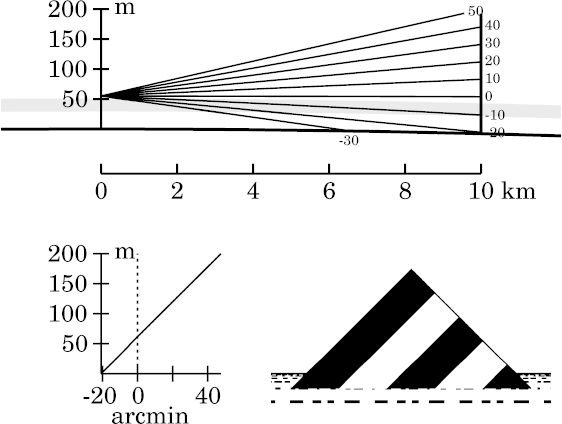
You can see that the target is much closer than the apparent “sea
horizon”, both in the simulation at the right, and in the ray
diagram above it.
As usual, each ray is marked at its right-hand end with its
altitude (in minutes of arc) at the observer.
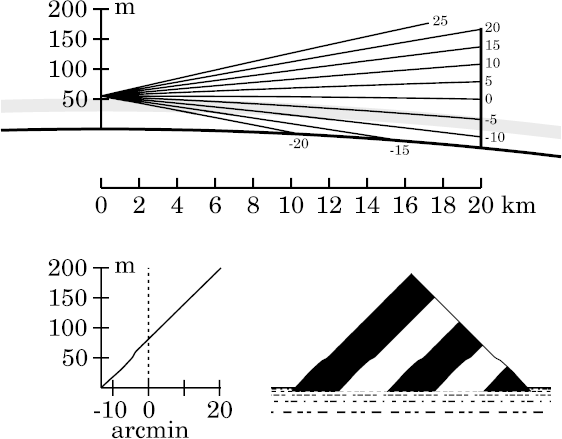
The upper part of the target, above the inversion, is seen through air with the standard lapse rate. So it's neither strongly displaced nor distorted.
However, the part of the target within the inversion layer is squeezed into a thinner interval of apparent altitude. That's the part between 30 and 50 m height, or the 10% of the 200 m-high target between 15% and 25% of its total height — see the little vertical jog in the transfer curve, near −4′ altitude. This zone of the target displays the effect called stooping (i.e., vertical compression).
This is an obvious consequence of the continuity of the image: the top is
hardly displaced, while the bottom is raised; so the part in between has
to be compressed.
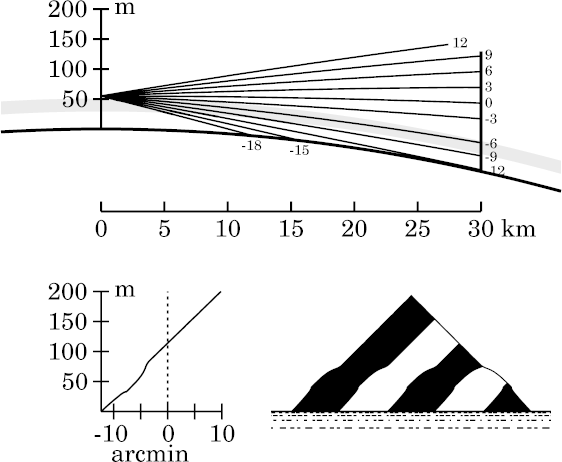
First, note that the stooped zone (the steeper section of the transfer curve) is now much larger. This is the shoulder-shaped feature in the simulated image, produced by the larger deflection of rays near the top of the inversion. (Look at the gap that has developed between the rays the observer sees at altitudes of −3′ and −6′.)
But just below this, at about −8′, there's a zone where the sloping side of the target is imaged as a nearly-vertical line (the short horizontal feature in the transfer curve). If you look at the ray diagram, that's caused by the convergence of the rays between −6′ and −9′ at the target: a tiny piece of the target near 30 m height has been expanded in the image, producing a short, steep cliff. The rather sharp, pointy corner at the top of this cliff is produced where rays just graze the bottom of the inversion.
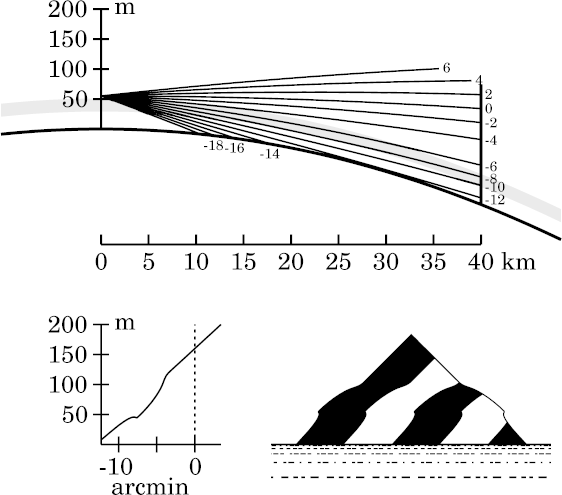
In the transfer curve, the flat spot near −8′ in the previous example has become a local maximum, so that features on the target near 45 m height are now seen at two different apparent altitudes near −8′: an erect image below, and an inverted image above.
In fact, if you trace a horizontal line across the transfer curve near 45 m height, you find that it intersects the curve again in the strongly-stooped region, near −6′. So there's a third, erect image above the inverted one. These two images meet at the overhanging lip on the edge of the cliff.
The mock mirage here is not well developed; less than 1′ of the image is inverted. This probably would escape notice with the naked eye, though the general image distortion should be noticed by anyone familiar with the normal view of the scene.
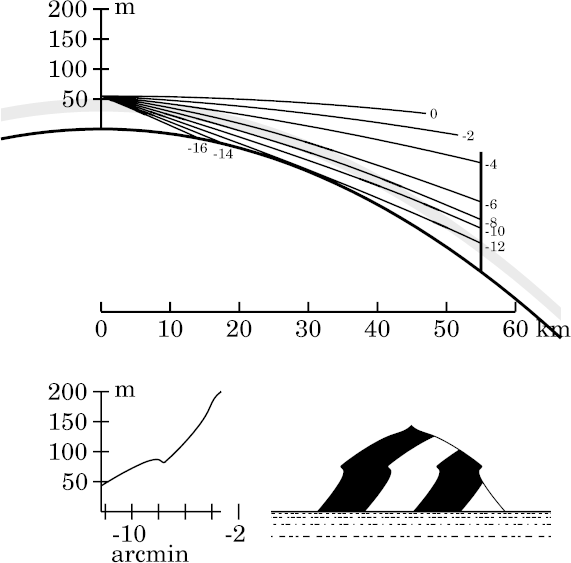
Here, at 55 km, the whole upper section of the target has been stooped down nearly into a sort of shield, or mushroom cap, above the miraged part. (This stooped feature, due to refraction at the top of the inversion, is discussed in more detail here). The little cusp on top is all that remains of the undistorted image seen above the inversion.
Also, notice that the top of the inverted image is vertically compressed, compared to the erect portion below it (look at the slopes of the sides). Of course, its lower part, where it joins the erect one, is vertically stretched.
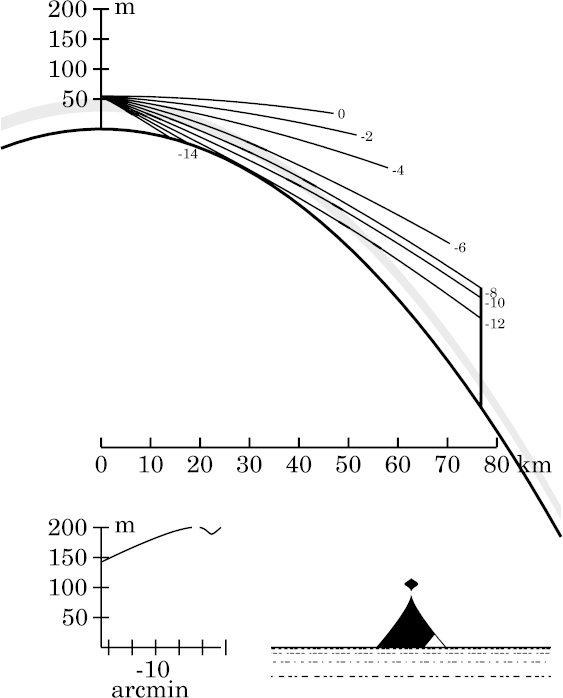
As in the previous two cases (target at 40 and 55 km), the mock mirage is produced near an altitude of −8′, where the visual ray grazes the bottom of the inversion.
The upper two images (the erect one above, the inverted one below it) appear together as if suspended in the air. The gap between the inverted image and the lower erect image corresponds to the gap in the transfer curve. This space contains a double image (the lower part erect, the upper part inverted) of a narrow strip of sky just above the top of the target.
Of course, this is the situation that produces little double images of the green rim in mock-miraged sunsets, where the separated piece of rim produces a mock-mirage green flash.
Copyright © 2008 – 2009, 2012 Andrew T. Young
or the
introduction to all mirage simulations
or the
main mirage page
or the
GF home page
or the website overview page